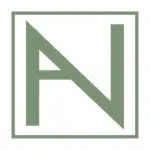The influx of herbal Medicine has been increasing in the mainstream of healthcare, ranging from its wide consumption and acceptance in Nigeria. It also has huge risks that require high regulatory checks. The National Agency For Food and Drug Administration and Control (NAFDAC) outlined the Manufacturing Guidelines for Herbal Medicinal Products to guarantee that the manufactured products are in conformance with quality standards. These guidelines are to ensure that no Herbal Medicinal Products are distributed, advertised, exported or manufactured unless it is registered in conformance with the provisions of the Food, Drugs and Related Products Act Cap F33 LFN 2004 (formerly decree 19 of 1993).
Although, development and research activities of finished Herbal Medicinal Products are not subjected to these guidelines. The production of Herbal Medicinal Products of sterile source — implants, injectable, solution, ophthalmic, infusion — are not part of this guideline. Monitoring is one of the key factors in the production of herbal medicinal products to ensure its quality standard. Herbal Medicines are manufactured from herbs, precisely herbal origin, which is quite opposite to the synthetic feature of pharmaceutical products. This makes herbal medicines subjected to various conditions.
Head of department should be responsible for quality control duties.
Moreover, the use of GMPs in the production of these medicines is caused by the complication of naturally grown medicinal plants which are often contaminated or toxic. The use of GMPs will assure the quality of the products. In addition, there should be adequate experienced personnel that are educated and trained, with adequate knowledge required for their employment. Nevertheless, individuals are not to be placed on extensive responsibilities to avoid risks to the products, but the employees in charge of quality control and production should be placed on full time employment.
All employees must be accountable for the maintenance and establishment of high quality standards. There must be an head of department, who has the requisite understanding, knowledge, experience and training of all practical difficulties faced in the production of these medicines, in the organization to lead the quality control section and production. This personnel must be responsible for quality control duties, production areas, production personnel, covering operations and production. Also, the personnel is charged with the full responsibility of the implementation of all quality control procedures, including their verification, and establishment.
Buildings must be properly ventilated and lit.
Also, the manufacturing premises must be appropriately designed, maintained, constructed and located to facilitate hygiene and good Sanitation with effective measures to prevent the breeding of pests which can cause contamination. Provision of appropriate facilities and dressing rooms must be ensured, with total separation of production areas from the toilets to prevent cross contamination of products. Drains around processing areas should prevent backflow and must be of adequate size. Buildings must be properly ventilated and lit, with lighting points on the walls and ceiling.
Sufficient capacity of storage areas must be provided for proper storage of products such as products in quarantine, bulk and finished products, starting and Packaging materials, recalled, returned, rejected or released products. Likewise, cautions must be ensured to prevent finished products, preparations and herbal materials from infestation or contamination by pests and biological contamination. Also, sampling areas must be established for starting materials, to avoid infestation. Designing and Construction of manufacturing equipment must be good enough to match the production of the product.
Proper hygiene and sanitation must be practiced.
Equipment are to be prevented from affecting the product through inappropriate adaptations, lubricant drips, and leaking valves. Precautions must be ensured where equipment are used to avoid risk of contamination. Measures for ensuring the safety of the environment, products and personnel must be assured. Measuring instrument with expired calibration should not be used in production. Proper hygiene and sanitation must be practiced to prevent contamination of products. The same should be applicable to personnel, equipment, containers and premises.

